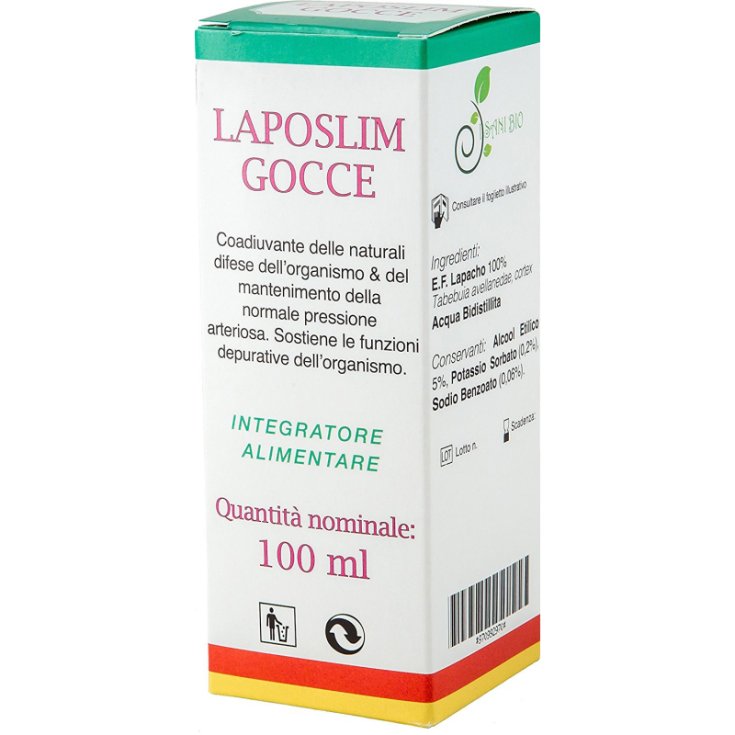Atena Laposlim Liquid Extract 100ml
- Brand: ATENA BIO Srl
- Product Code: 970992970
- EAN: 8052780981675
- Availability: In 10 - 14 Days
- Purchase 3 items for 34.92€ each
- Purchase 4 items for 34.20€ each
- Purchase 5 items for 33.49€ each
Athena
Laposlim
Liquid Extract
INGREDIANTS
Aqueous extract of Lapacho (Tabebuia Avellanedae Lorenz) bark (D / S ratio: 1/5), Ethyl Alcohol, Preservatives: E202 Potassium Sorbate (0.2%), E211 Sodium Benzoate (0.06%). Alcohol content 5% v / v.
THERAPEUTIC INDICATIONS:
The properties of lapacho are above all antibacterial, anti-inflammatory, antioxidant, purifying and tonic . There are several scientific researches that have confirmed the virtues of this plant of which an active ingredient, lapachol , has been isolated in particular, useful in contrasting fungi and bacteria. The effects of this tree continue to be studied, also evaluating the possibility that it could be a valid ally in the fight against cancer. The various indications are detailed below:
- Carcinoma: during the 1950s, the team of Professor Osvaldo Gonsalves of the University of Recife demonstrated the antibiotic action of many active constituents. In the same period, Professor Walter Radames Accorsi conducted large-scale clinical trials in a hospital in São Paulo, using lapacho to treat patients with leukemia, carcinoma, inflammatory states and immunodeficiency. The results have been very promising and their publication has raised a lot of interest. Professor Accorsi's findings have been incorporated into the Brazilian Pharmacopoeia, which states that lapacho can be used in all types of carcinoma and leukemia. Over the years there have been many studies and researches conducted by various doctors and researchers including doctors Teodoro Meyer and Sebastiao Laet. Later, little was heard of lapacho, until the 1980s, when the silence on the first Brazilian research was broken and new international data were released.
- Antibacterial activity: Lapachol has been shown to be effective against gram-positive bacteria (eg staphylococci and streptococci) and against gram-negative brucella. However, the continuous purification of the lapacho extract led to a loss of the antibiotic action. It was established that, apart from lapachol, a quantity of other constituents with antibiotic activity were present in the plant. Shortly thereafter, a- and b-lapachone and xyloidone were isolated. These compounds, in addition to an antibiotic activity, also possessed a strong antifungal activity.
- Antiviral activity: this activity is based on the inhibition of the enzymatic processes that are necessary for the virus to multiply. Various constituents of lapacho such as lapachol, b-lapachone, hydroxynaphthoquinones and the bioflavonoid quercetin) have shown antiviral action. Lapachol has been shown to be effective against herpes simplex virus I and II, polio virus and vesicular stomatitis, while b-lapachone is also active against retroviruses (the class of viruses that can cause cancer, leukemia and AIDS). Hydroxynaphthoquinones are also active against various influenza viruses and quercetin, apart from its antiretroviral activity, is also active against herpes, polio and rabies.
- Antiparasitic activity: according to Brazilian researchers, lapacho and the isolated constituents of lapacho are active against numerous tropical parasites. Lapachol, as well as a- and b-lapachone and quercetin have been shown to have antiparasitic activity. Disorders that responded to treatment with lapacho or its constituents were malaria and schistosomiasis.
- Fungicidal activity: fungi also appear to be sensitive to the antibiotic substances of lapacho. Quinones (naphthoquinones), especially xyloidone, are very effective against Candida albicans and Trichophyton which causes ringworm. Also in case of gatrointestinal tract infections, lapacho can be used as an adjuvant.
- Diabetes: Modern research has found that the antidiabetic effect is due to the alkaloid thecomine, which was isolated in 1959, and has a substantially hypoglycemic action. Animal experiments have shown a reasonable safety margin for thecomine, however it is very unstable and its level can drop rapidly; but if the level of natural antioxidants is high, it can remain stable for a much longer time. Tecomina is mainly localized in the leaves.
- Other uses: in addition to the aforementioned uses, lapacho also has other indications, including it promotes weight loss and an anti-inflammatory activity, especially on the mucous membrane of the intestinal tract, bladder and prostate, on the female genital system, on the mouth and throat. Successes have also been reported in the treatment of intestinal and bladder polyps and intestinal ulcers. Lapacho stimulates the formation of red cell cells. Thanks to its purifying action, it is useful in skin diseases due to a decreased elimination of metabolic waste products; Activities such as cardiotonic and vulnerary have also been reported. As for side effects , recent research has confirmed that the toxicity of Lapacho is very low and that the antivitamin K effect is largely offset by the vitamin K-like properties of anthraquinones. Lapacho should never be taken during pregnancy and breastfeeding or even if you use anticoagulant drugs , including aspirin . The side effects of this plant are rare and occur mainly at the gastrointestinal level, if they occur, just stop taking it immediately.
ADVICE FOR USE
Take 6 drops for every 10 kg of body weight 3 times a day. (The daily dose of 90 drops gives an intake of about 5.4ml of Tabebuia avellanedae Lorenz).

